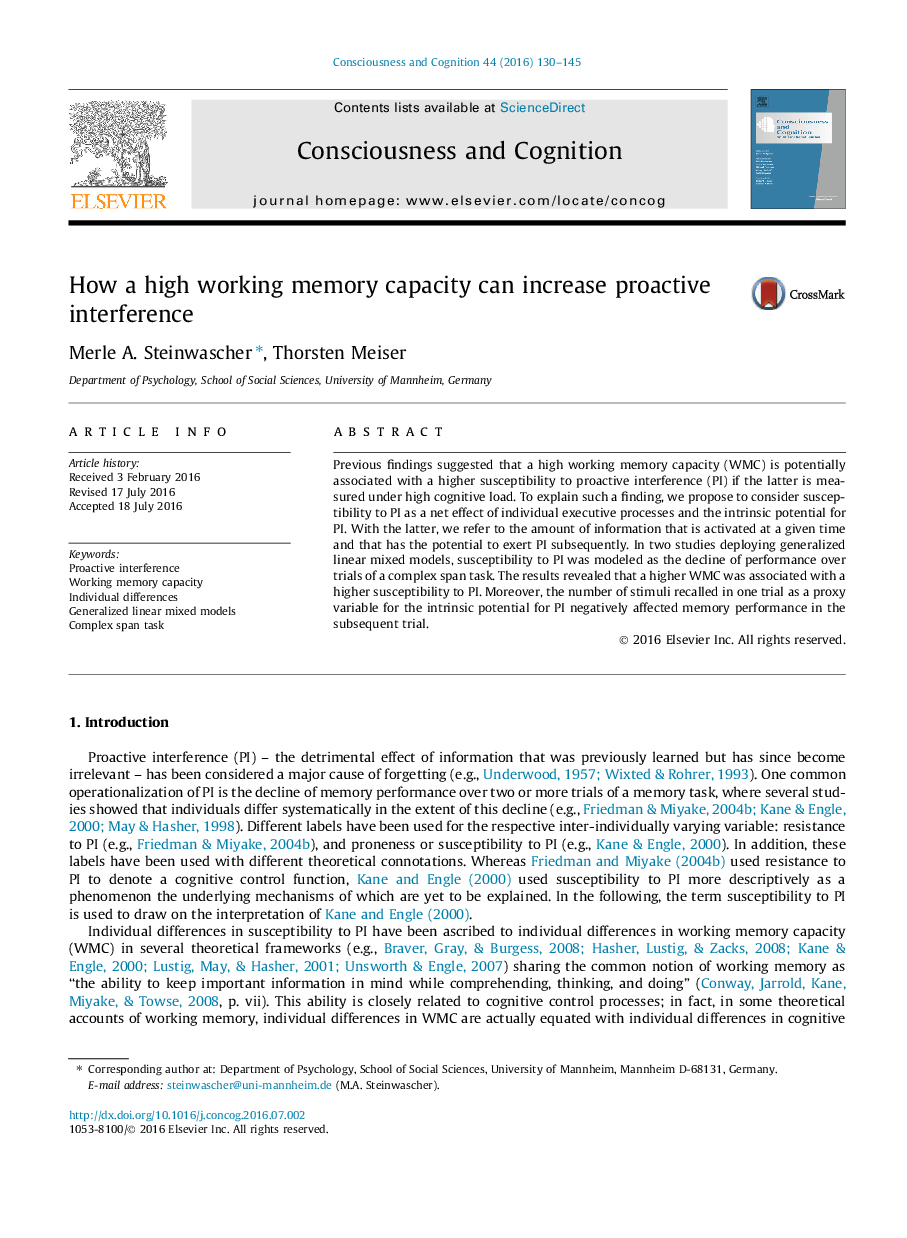| Article ID | Journal | Published Year | Pages | File Type |
|---|---|---|---|---|
| 7288318 | Consciousness and Cognition | 2016 | 16 Pages |
Abstract
Previous findings suggested that a high working memory capacity (WMC) is potentially associated with a higher susceptibility to proactive interference (PI) if the latter is measured under high cognitive load. To explain such a finding, we propose to consider susceptibility to PI as a net effect of individual executive processes and the intrinsic potential for PI. With the latter, we refer to the amount of information that is activated at a given time and that has the potential to exert PI subsequently. In two studies deploying generalized linear mixed models, susceptibility to PI was modeled as the decline of performance over trials of a complex span task. The results revealed that a higher WMC was associated with a higher susceptibility to PI. Moreover, the number of stimuli recalled in one trial as a proxy variable for the intrinsic potential for PI negatively affected memory performance in the subsequent trial.
Keywords
Related Topics
Life Sciences
Neuroscience
Cognitive Neuroscience
Authors
Merle A. Steinwascher, Thorsten Meiser,
